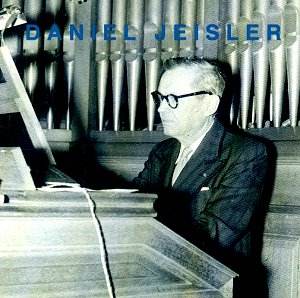Born in 1877 in Klockrike, Daniel Jeislerís studies
took him to Stockholm, where he excelled on piano and organ but
it was in Paris that he spent the majority of his life. There
he met Saint-Saëns amongst others, cultivating friendships
and accompanying such artists as Ninon Vallin, Pablo Casals and
Jacques Thibaud. He was organist at the Swedish Church in Paris
for over forty years, inaugurating concerts and composing; four
symphonies, sonatas for cello (his wife was a well-known cellist)
and other chamber works as well as a large number of songs and
organ music.
His Introduction, chorale and variations for
organ dates from the last year of the First World War. Itís
an attractive work written securely in the French style with an
Andante section of powerful and gathering eloquence and intensity.
There are times though when, for all its security of technique
and musicianship, it does rather tread water. Given his knowledge
of the cello his idiomatic writing for it is only to be expected
and the 1921 First Cello Sonata, a big work in four movements,
is attractively wide-ranging in its freedom. The first movement
has an impressionistic burnish though it lacks a certain concision
of utterance, whilst the quick second movement is a playful one
and adopts a Ravelian cast in its mediation of the past with the
present. The old world baroquerie that Jeisler introduces co-exists
with scampering writing and amusing pizzicato episodes. Maybe
the players could have taken it quicker for optimum effect Ė itís
marked Molto Vivace. Jeisler has a long-breathed Adagio but itís
not really distinctive enough thematically and I preferred the
Finale, which opens musingly before developing some animated and
Brahmsian strength with nicely lyric edge.
The Five Songs vary from light, then-contemporary
folk style to the use of subtle barquetta rhythm. The most impressive,
harmonically, is Rafales díautomne, which would be more than worth
hearing in a recital set in its historical and geographical context.
Finally the Adagio for string orchestra, taken from a radio
broadcast, which is rather Mahlerian (No.5) though it develops
some sinewy and agitated writing along the way.
Performances are very sympathetic. There are
times when cellist Kerstin Elmqvist-Gornall is too backwardly
balanced in the Sonata but it matters very little since the playing
is enthusiastic. Soprano Kristina Furbacken has a light attractive
voice and does well by the songs. Notes are in French and Swedish.
Jonathan Woolf
